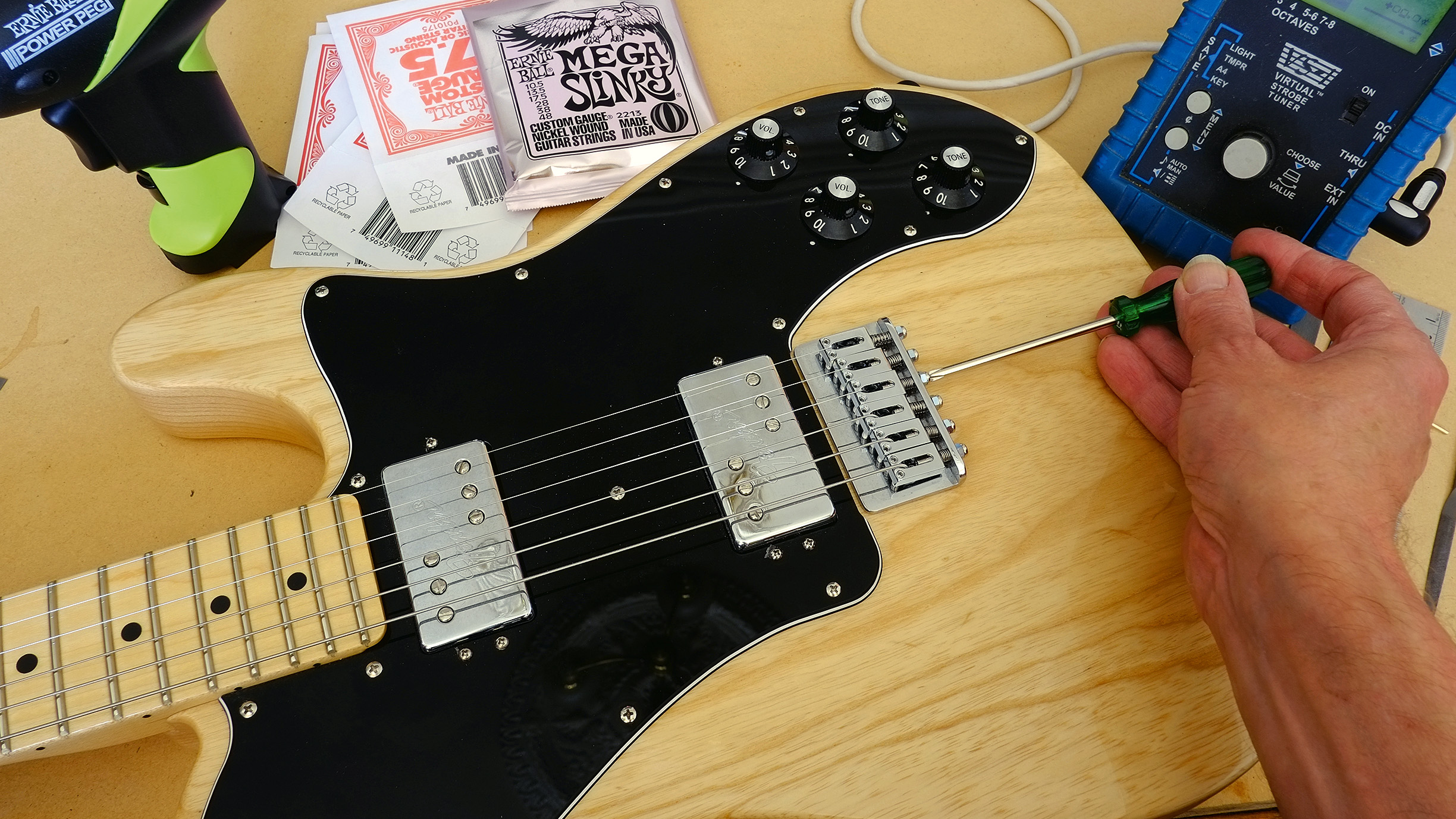
There can be many possible reasons why your guitar isn't playing or sounding as good as it could be. A regular guitar setup can help with this, and central to that is something called intonation.
When an electric guitar is properly intonated, every note on the fretboard will sound in its correct pitch. And the clearest way to know that your guitar isn't intonated correctly is it never sounds properly in tune as you play certain notes, even if you've just tuned it. Then tuned it again.
Adjusting intonation involves lengthening or shortening the vibrating string lengths on your guitar via the bridge – providing it has adjustable saddles. These adjustments are small and require careful monitoring with an accurate guitar tuner.
There's a school of thought that suggests incorrect intonation could be one of the most overlooked issues plaguing guitars.
Jim DeCola's video above (via Gibson Gazette) talks you through the steps of diagnosing and addressing intonation issues on your guitar. As a Gibson Master Luthier, he has a wealth of experience in this field and breaks down the factors involved clearly and concisely.
There's no such thing as perfect intonation, but we can adjust it to maximise its accuracy
"There's no such thing as perfect intonation, but we can adjust it to maximise its accuracy," notes Jim. This is because bridges and intonation can only compensate so much for the different thicknesses of electric guitar strings. With this in mind, you may need to check your intonation when switching to a different gauge of strings. Strings also wear, and change as they do so, but moreover – different players play differently and that has another influence – something pro player Martin Miller has talked about with us.
Jim breaks it all down in the video above – and we have our own tutorial here – including how you check your intonation and then go about adjusting it if it can be improved.







